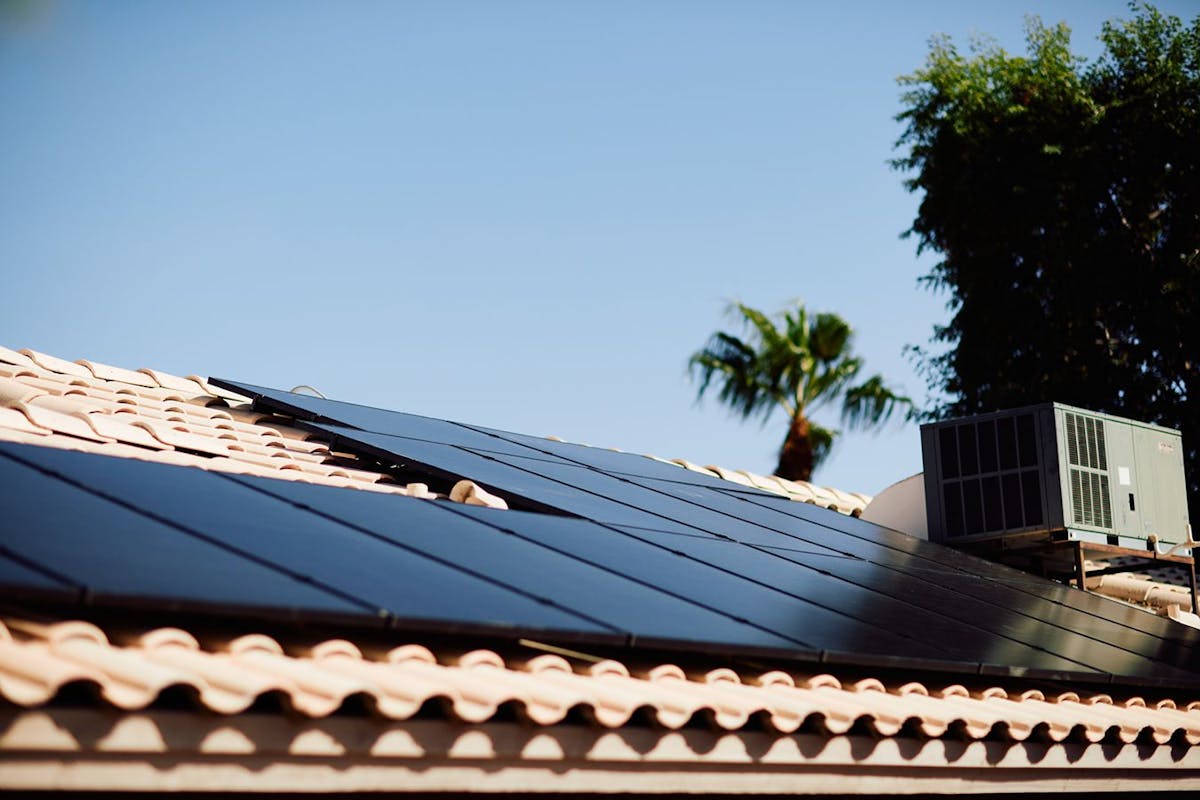How Energy Policy Incentives Can Maximize Your Solar Savings
Last edited

Author
Andrew Blok
Electrification and Solar Writer and Editor

Editor
Andrew Giermak
Solar and Electrification Writer and Editor

Home solar panels can reduce electricity bills. That’s why nearly five million American homes have gone solar.
Many of those households were able to take advantage of incentives for solar, storage, or other energy-related improvements to reduce their bills even further and increase their savings.
If you’re looking to go solar, it’s important to look at what incentives might be available to you at the federal, state, and local levels. They could reduce your costs and boost your lifetime savings. Here’s what may be available to you.
Editor’s note (5/29/2025): Some of the incentives discussed below are actively being debated in the US Congress this year. Confirm for yourself your eligibility for incentives as policies and eligibility requirements can change.
See how much you can save by going solar with Palmetto
Major Incentives for Solar and Storage
By some measures, solar is the cheapest form of new electricity in history and is dominating new investments in the renewable energy sector. In 2025, solar and storage is expected to comprise 81% of all new additions to the grid.
This sustained growth is thanks to falling costs and federal and local efforts to promote solar. Beyond financing programs designed specifically for low-income households, most solar incentives fall into one of the following categories.
- Tax incentives: Some of the upfront costs of going solar can be recovered by reducing the federal or state income taxes you owe after your renewable energy system is installed.
- Rebates: Rebates for solar are more likely to be available at the city or utility level and often promote the adoption of solar energy battery storage systems.
- Net metering and performance-based incentives: These incentives may help you earn electricity bill credits or direct payments for the energy your system produces and sends to the grid.
Tax incentives, rebates, and utility programs for renewable energy systems reduces the upfront costs, speeds up your solar payback period, and further boosts your system's long-term financial benefits.
Here are four key policy incentives for renewable energy projects every homeowner should know when going solar.
Federal Solar Investment Tax Credit
The Federal Solar Investment Tax Credit (ITC), extended by the Inflation Reduction Act and now known as the Residential Clean Energy Credit (RCEC), can return a portion of the installation cost to you when you file your taxes.
Here are a few of the most important aspects of the Residential Clean Energy Credit.
- Tax credit is worth up to 30% of total project costs, including parts, labor, permitting, and overhead. If your renewable energy installation costs $35,000, you may be eligible for a federal income tax credit worth up to $10,500.
- To be eligible for the RCEC, you must purchase and own your solar energy system and live on the property where it is installed.
- Taxpayers must include Form 5695 with their filing for the year the solar energy system is completed. If tax credit values exceed federal income liability, the RCEC can be rolled over to future years.
Unless the credit is altered, solar projects completed in 2033 will be eligible for a 26% credit and systems completed in 2034 will receive a 22% credit before the program expires in 2035.

Credit: SEIA
State and local solar incentives and rebates
There are a few primary state and local programs to investigate.
If you are not sure where to start, ask a local solar expert for some guidance, refer to local government resources (state, county, city, etc.), or explore the Database of State Incentives for Renewables & Efficiency from the North Carolina Clean Energy Technology Center. Always confirm the incentives are still active and apply to you.
State income tax credits
Much like the federal tax credit, state solar income tax credits might be available to you. While state-sponsored solar income tax credits are somewhat rare and vary in value, several states do offer solar tax credits, including Arizona, New Mexico, New York, Massachusetts, South Carolina, and Utah.
Sales tax exemptions
According to the Solar Energy Industries Association (SEIA), 25 states maintain sales tax exemptions for solar equipment.
Property tax exemptions for renewable energy sources
Many studies have shown that paid-off solar panels on your roof can increase your home's value. To avoid penalizing solar owners with higher property taxes, many states exempt solar panels when property taxes are calculated.
Local programs for renewable energy projects
Many communities and utility companies offer one-time rebates for solar-powered systems.
Although there are too many homeowner-focused local programs to mention in one blog post, both Fort Collins, Colorado, and Dunedin, Florida, are local incentive leaders.
See how much you can save by going solar with Palmetto
Net Metering Policies: Earning Credits for Surplus Energy
Net metering policies have been the hero of the early solar industry. While some states are stepping back from them, they still play a key role.
Utilities that offer net metering programs for home solar compensate homeowners for the excess electricity generated by their panels and shared with the grid.
How net energy metering policies work
Net energy metering (NEM) policies dictate the rates at which utility companies compensate solar producers for renewable energy shared with the grid, often called feed-in tariffs.
State utility commissions typically set or approve net metering policies, which vary in structure and value across the country and between utilities.
Though policies are subject to change, 34 states, Washington D.C., and Puerto Rico, maintain mandatory net metering requirements for investor-owned energy utilities in 2025.
At a basic level, if you send 200 kilowatt-hours (kWhs) to the grid, your utility gives you a credit for 200 kilowatt-hours that you pull from the grid at another time.
Where net metering is available, many homeowners design renewable energy systems to produce enough solar electricity to meet the property's approximate annual energy demand.
NEM 3.0 and net billing policies
Nicknamed NEM 3.0, California's major power utilities shifted to new net billing policies in 2023, which compensate solar energy producers for power shared with the grid at a lower avoided-cost rate.
By reducing the value of energy Californians return to the grid, NEM 3.0 and net billing programs incentivize homeowners to invest in a system with a solar battery included where they can keep more of their free solar energy for themselves. Although the incentive is weaker, solar and storage can still save significant money in California.
Renewable Energy Production and Performance-Based Incentives
Unlike net metering or net billing, which can reduce utility electricity expenses, some performance-based incentives for solar energy system owners can earn some money.
Only available in a few select states, there are several performance-based incentives that will pay solar producers for the electricity their system exports with direct deposit payments, at low rates per kWh. Similarly, you can still sell solar renewable energy credits, the environmental benefit of your solar energy, in a few states (Illinois, New Jersey, and Massachusetts area big ones).
Battery owners may be able to join a virtual power plant or demand response program, where they’re compensated for sending some of their stored energy back to the grid. With a battery and smart energy controls, homeowners can store their renewable energy production as needed and make timely grid exports for maximum financial returns.
These programs are likely getting more common as the grid becomes more distributed and reliability becomes more of a concern.
Financial Benefits of Solar Energy Incentives
Alongside slowly lowering prices and energy efficiency increases in solar equipment over the last 15 years, energy policy incentives have made solar panels financially feasible for millions of American homeowners.
Let's look at how a single homeowner in Concord, Massachusetts, could benefit from three separate energy policies that make solar not only feasible but well worth the investment.
- With no cap, the 30% RCEC is an extremely valuable tax incentive for most Americans. Though not everyone will qualify, it is available nationwide.
- This homeowner may also qualify for the Massachusetts solar income tax credit worth up to $1,000.
- Even further, a program offered by the Concord Municipal Light Plant could land this homeowner a one-time rebate worth up to $3,125, based on the size of this installation. (Rebates generally must be applied before calculating tax credits, but check with your tax professional.)
Environmental Impact of Solar Energy Policy Incentives
With so much talk about solar savings, it can be easy to forget most energy policy incentives have environmental objectives guided by state or local renewable portfolio standards.
Let's look at the carbon offset of a typical single-family home replacing fossil fuels with solar.
- Let's say your panels produce enough solar power to cover your annual household energy demand, around the US average of 10,791 kWh.
- In this scenario, your solar panels may produce greater than 200,000 kWh during their multi-decade lifespan. According to the EPA, this represents the equivalent of approximately 140 metric tons of carbon dioxide avoided.
- Therefore, a single homeowner going solar avoids the emissions of approximately 150,000 pounds of coal (about 3/4 of a railcar) or the carbon sequestered by 160 acres of US forests in a year.

Key Concepts and How to Get Started
Renewable energy policies have fueled the tremendous growth of residential solar power and homeowner savings over the last few decades.
From federal solar tax credits to utility net metering policies and performance-based programs, solar energy system owners have a variety of avenues to reduce the upfront costs of renewable energy and earn maximum long-term financial benefits.
You can’t secure long-term savings without starting with a quality solar installation. If you’re looking to go solar with a knowledgeable solar guide by your side, reach out to Palmetto today or get a free savings estimate with our solar calculator.
<-- ESTIMATOR_WIDGET 3 →
Frequently Asked Questions
What is the federal solar tax credit?
The federal solar tax credit, also called the Investment Tax Credit or the Residential Clean Energy Credit, allows homeowners to claim a credit worth 30% of the cost of going solar at home.
Do you actually save money with solar panels?
Most people go solar because it saves them money, in some cases up to tens of thousands of dollars over the lifetime of their panels. Homes with shaded roofs or those starting with very small electric bills may not be a good fit for solar.
Disclaimer: This content is for educational purposes only. Palmetto does not provide tax, legal, or accounting advice. Please consult your own tax, legal, and accounting advisors.
Estimated system costs include installation - the Federal Investment Tax Credit is calculated as a percentage of those costs. Estimated savings assume eligibility and application of the Federal Investment Tax Credit. Site improvements, such as a main panel upgrade or roof replacement, may be required at an additional cost. We will assess this need during your site survey and outline any additional costs before signing your contract.



